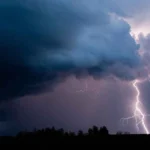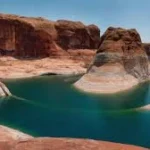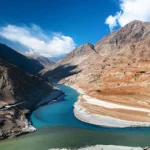
Plains, expansive and diverse landscapes, have played integral roles in shaping the history, ecology, and cultures of regions across the globe. From the vast Great Plains of North America to the fertile Pampas of Argentina and the historic steppes of Eurasia, these flat expanses of land have witnessed migrations, battles, and the evolution of civilizations. In this exploration, we delve into 25 historical facts and numerical trivia about plains, spanning continents and centuries, each revealing a unique facet of these essential terrains.
The Great Plains cover an expansive area of approximately 1,125,000 square miles, spanning from the northern reaches of Canada down to Mexico in the south. This vast region is characterized by its flat to gently rolling landscape, interrupted by occasional buttes and canyons. It is a crucial part of North America’s geography and has played a significant role in the continent’s history, serving as both a barrier and a corridor for human migration and trade.
The altitude of the Great Plains varies, typically ranging from 2,000 to 6,000 feet above sea level. This diverse topography influences the climate and vegetation across the region, contributing to the creation of distinct ecosystems. The elevation also affects the agricultural practices adapted by communities residing in different parts of the Great Plains.
The 1930s marked the tragic period known as the Dust Bowl, a devastating ecological disaster that impacted around 100 million acres of land across the Great Plains. Severe dust storms, exacerbated by poor farming practices and prolonged drought, led to widespread crop failures and economic hardship. The Dust Bowl had profound social and environmental consequences, prompting significant changes in agricultural policies and land management practices.
The Mongolian Steppe is a vast expanse of grassland in Central Asia, covering over 1.2 million square kilometers. It has been integral to the nomadic way of life of the Mongolian people, who have historically relied on their expertise in horsemanship and herding to navigate and sustain themselves in this challenging terrain. The steppe’s role in shaping the culture and history of Mongolia is undeniable.
The Central Asian Steppe has been a cradle of nomadic civilizations, with the Mongols being just one example. Extending over 4.9 million square kilometers from Hungary to Manchuria, this expansive grassland has witnessed the rise and fall of empires and shaped the migratory patterns of various ethnic groups.
The Eurasian Steppe is the largest steppe region globally, covering vast stretches of Russia and neighboring countries. Its immense size and ecological diversity contribute to the region’s geopolitical significance and have influenced the development of diverse cultures and societies over centuries.
The Pampas of Argentina cover an area of approximately 295,000 square miles, making them one of the most extensive plains in South America. Known for their fertile soil, the Pampas have been a key agricultural region, supporting the production of crops such as wheat and soybeans. The vast grasslands also provide excellent grazing land for cattle, contributing to Argentina’s prominence in the beef industry.
The North American Prairies are a type of temperate grassland covering significant portions of the central United States and parts of Canada. These expansive plains were once home to vast herds of bison and served as crucial hunting grounds for indigenous peoples. European settlement brought about significant changes to the prairies, leading to the conversion of large areas for agricultural purposes.
The Siberian Steppe is an extensive grassland region that plays a pivotal role in the geography of Russia. Its vast expanse has historically served as both a barrier and a conduit for migration and trade, contributing to the complex historical tapestry of the Eurasian continent.
The Chaco Plain in Paraguay is characterized by a semi-arid climate and savanna vegetation. Historically, this region has been home to indigenous peoples such as the Guaraní and served as a crossroads for cultural exchange. The Chaco War (1932-1935) between Paraguay and Bolivia took place in this challenging terrain, making it a significant historical battleground.
The Plains of Nineveh in Iraq hold historical significance as the location of the ancient Assyrian city of Nineveh. This vast plain witnessed the rise and fall of powerful ancient civilizations, leaving behind archaeological treasures that provide insights into the cultural and technological achievements of the past.
The Yangtze River Delta Plain in China is a densely populated area, contributing significantly to the country’s economic development. Its strategic location and fertile soil have made it a hub for agriculture, industry, and commerce, playing a crucial role in China’s rapid urbanization and modernization.
The North European Plain, extending from France to Russia, is a major agricultural region and a historical battleground. Its flat terrain has witnessed pivotal events in European history, including major military conflicts. The fertile soils of the plain have supported the growth of various crops, influencing the economic development of the nations within its expanse.
The Prairie Dog Towns in North American prairies cover vast areas, housing complex underground burrow systems. These towns are essential to the survival of prairie dog communities, providing shelter and protection. Despite being considered pests by some due to their burrowing activities, prairie dogs play a vital role in maintaining the ecological balance of the grassland ecosystem.
The Australian Outback spans the majority of the continent’s interior, characterized by arid landscapes and unique flora and fauna. This vast, sparsely populated region is home to iconic natural landmarks such as Uluru and plays a significant role in the cultural identity of Australia’s indigenous peoples.
The Llanos of South America, covering Venezuela and Colombia, are seasonally flooded plains known for their biodiversity and agricultural potential. These plains provide crucial grazing land for cattle and support a variety of wildlife, including capybaras, anacondas, and a rich diversity of bird species.
The Kazakh Steppe is part of the larger Eurasian Steppe and has been integral to the nomadic lifestyle of the Kazakh people. This expansive grassland has served as a historic crossroads for trade and cultural exchange, influencing the development of Central Asian civilizations.
The Tibetan Plateau, often referred to as the “Roof of the World,” is the highest and largest plateau globally, with an average elevation exceeding 4,500 meters. This vast, elevated region plays a crucial role in regulating Asia’s climate and is the source of major rivers, including the Yangtze and Yellow Rivers.
The Indo-Gangetic Plain spans northern India and Pakistan and is one of the world’s most fertile regions. This plain has been the cradle of ancient civilizations, including the Indus Valley Civilization, and remains a vital agricultural area supporting a dense population.
The Alfalfa Production in the U.S. Plains is prominent, particularly in states like Kansas, Nebraska, and Texas. Alfalfa, a valuable forage crop, is grown extensively in these plains, contributing to the livestock industry and providing essential feed for dairy and beef cattle.
The Steppes of Ukraine have played a crucial role in the history of the region, serving as the backdrop for nomadic migrations and military campaigns. The vast grasslands have witnessed the movements of various ethnic groups, shaping the cultural and geopolitical landscape of Eastern Europe.
The Fertile Crescent in the Middle East, known as the cradle of civilization, includes plains that have hosted ancient civilizations such as Sumeria and Babylon. This region, characterized by fertile soils and a Mediterranean climate, fostered the development of agriculture and urbanization in the early stages of human history.
The Hulunbuir Grasslands in Inner Mongolia, China, are among the world’s largest grasslands, known for their natural beauty and nomadic traditions. The grasslands provide crucial pasture for herders and support a unique ecosystem that includes diverse flora and fauna.
The Palouse Region in the U.S. Pacific Northwest is famous for its rolling hills and fertile soil. This agricultural area is known for the cultivation of wheat and legumes, contributing to the economic prosperity of the region. The distinctive landscape has also made the Palouse a popular destination for photographers and nature enthusiasts.
The Conversion of Plains to Agricultural Land has been a widespread phenomenon across the globe. Over the centuries, many plains have undergone significant transformations due to human activities, with large areas converted into agricultural land to meet growing food demands. This process has led to changes in ecosystems, impacting biodiversity and raising important questions about sustainable land use practices.
Frequently asked questions:
What do you mean by plains?
In geography, a plain is a broad area of relatively flat land with gentle slopes. They are one of the major landforms on Earth, covering more than a third of the world’s land area. You can find plains on every continent!
What are the meanings for plain?
As a noun related to geography, it refers to the flat landform we just discussed.
It can also be an adjective meaning “simple” or “ordinary.” For example, you might describe a plain white t-shirt.
Where are the plains?
Plains are found all over the world, on every continent except Antarctica. They exist in all sorts of climates, from the Arctic Circle to the tropics.
What is an example of plain?
There are many famous plains around the world. Here are a couple of examples:
The Great Plains of North America stretch across central Canada and the United States.
The Pampas are vast plains in Argentina.








